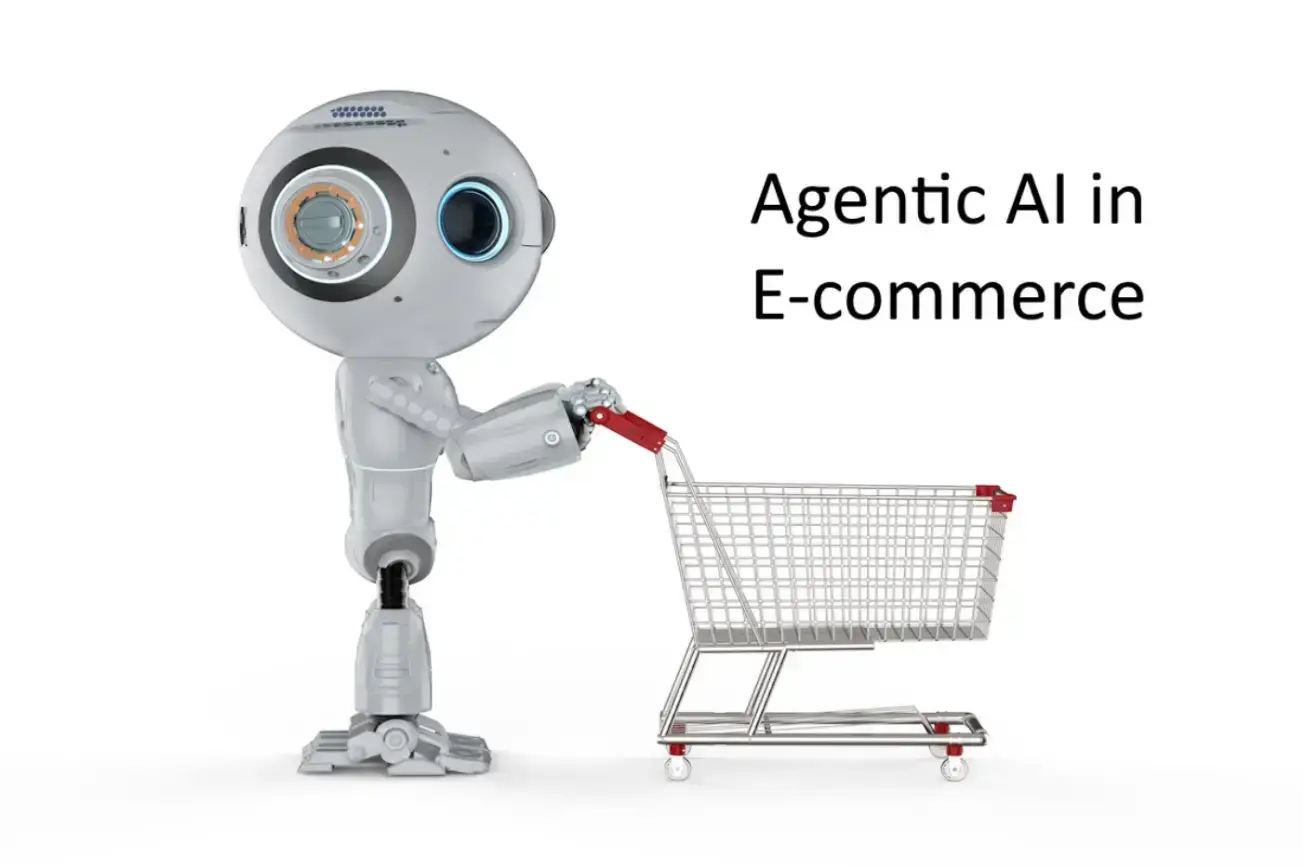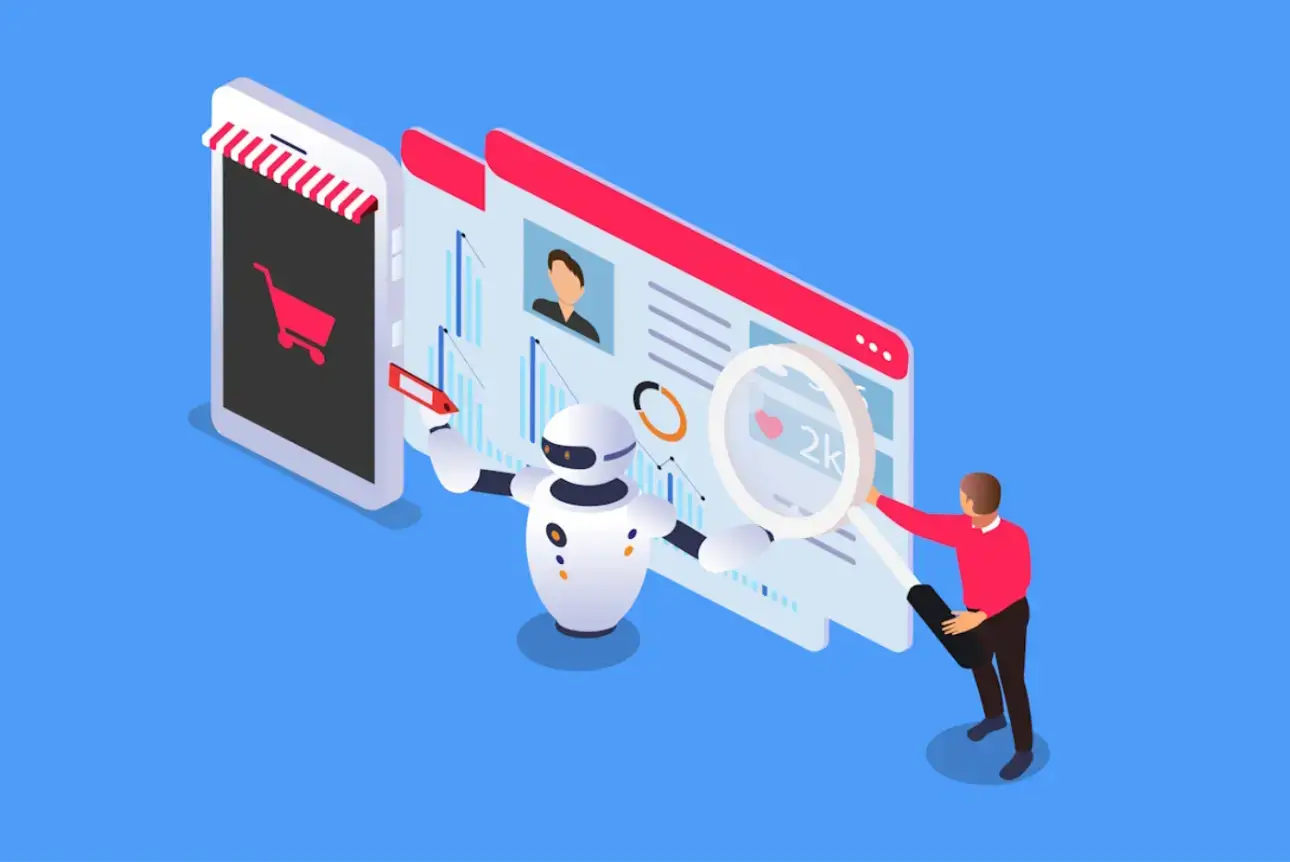Let’s face the fact that e-commerce is not what it used to be. The days of simply setting up a website, adding products, and watching orders roll in are long gone.
Now, it's all about personalization, speed, smart automation, and knowing your customer better than they know themselves. That’s where something called "agentic AI" is quietly stepping in and shaking things up.
Before you start picturing robots in warehouse aprons or imagining a Terminator-style takeover of your online store, let’s set the record straight. Agentic AI doesn’t mean your e-commerce site is becoming sentient.
What it does mean is that your digital tools are getting smarter—not just reacting to your instructions, but acting with a kind of autonomy to get things done.
So what exactly is agentic AI? And why should e-commerce sellers care? Grab a coffee and let’s break it down in everyday terms.
Article Shortcuts:
- The Old vs. The New Sales Funnel
- Why Agentic AI Is Crucial for Modern E-Commerce Success
- Real-World Brands Using Agentic Tools
- What Store Owners Should Watch Out For
- How Agentic AI Enhances the Customer Experience
- Why All This Matters Now
- How to Get Started with Agentic AI in Your E-Commerce Funnel
- FAQs

Source: Freepik
What is Agentic AI?
Agentic AI refers to tools or software that can perform tasks on their own. Think of them like digital assistants with initiative.
You don’t need to tell them what to do every single time. Instead, they’ve been designed to understand the goals and take steps toward achieving them. They make decisions, follow workflows, and even tweak strategies without needing constant supervision.
In e-commerce, this means software that not only collects data, but also acts on it. It’s like having a super-employee who’s always on, always analyzing, and always working to boost your business.
The Old vs. The New Sales Funnel

Source: Freepik
Let’s talk about sales funnels. In the old model, you had a fairly linear path: Awareness, Interest, Decision, and Action. Marketers would create content for each stage, run some ads, send some emails, and hope people moved down the funnel.
But shopping habits have changed. Today, a customer might bounce between stages, use five different devices, ask a chatbot three questions, read a Reddit thread, watch a YouTube review, and THEN decide to buy. It’s messy.
Today, we’re already used to ‘predictive AI’ – which analyzes data to provide recommendations, forecasts, and insights–and ‘generative AI,’ which learns from data and uses patterns to seamlessly generate text, images, music, and code. Agents go far beyond this. They can perform tasks independently, make decisions, and even negotiate with other agents on our behalf. And these new AI agents are easy to build and deploy, unlocking massive capacity.
- Marc Benioff, CEO of Salesforce
Agentic AI tools thrive in this mess.
They’re not tied to linear paths. They follow customers wherever they go, learn from their behavior, and adapt on the fly. They guide, assist, and nudge—all without needing a human behind the curtain pulling every lever.
Why Agentic AI Is Crucial for Modern E-Commerce Success
Let’s make this real. Here are a few areas where agentic AI is already making waves in e-commerce:
1. How Agentic AI Improves Product Recommendations
Ever been on a site that recommended something totally irrelevant? Yeah, we all have. Agentic tools don’t just go off "people who bought X also bought Y."
Instead, they dig deeper. They look at how long someone lingered on a product, whether they read the reviews, what they clicked next, and whether they added something to their cart but didn’t buy. Then they suggest something that actually fits that behavior.
2. Smarter Customer Service with Agentic Tools

Source: Freepik
Traditional chatbots are hit or miss. They can answer FAQs, but when you throw them a curveball, they crash and burn.
Agentic systems, on the other hand, learn from past interactions. They remember what a customer asked last time, track delivery updates, even follow up on complaints without being told. That’s not just smart it’s helpful.
3. Personalized Emails Powered by Agentic AI
Blanket email blasts are becoming a thing of the past. With agentic tools, email marketing becomes more like a conversation.
Instead of just sending an email because it’s Tuesday, the system waits for the right moment. It notices when someone abandons a cart, or when they repeatedly visit a category, and sends a message that speaks directly to that behavior.
4. Predictive Inventory & Supply Chain Optimization
Running out of stock on a bestseller is a nightmare. Overstocking a slow-mover is just as bad.
With agentic tools in place, your system can track patterns, predict demand, and adjust orders automatically. It can even alert suppliers, reroute shipping, and update your listings in real-time.
5. Real-Time Testing and UX Improvements with AI
Most store owners don’t have time to run A/B tests on every product page. Agentic AI can do it for you.
It can change button colors, product images, pricing layouts, and more—then watch what happens and adjust accordingly. It’s like having a live-in UX designer who never sleeps.
6. Dynamic Pricing Strategies Driven by Agentic AI
Agentic systems can also manage pricing in real-time. Say your competitors drop their prices and these tools can respond instantly, adjusting yours to stay competitive or highlighting value in different ways.
You’re no longer reacting manually to every change in the market.
7. Smarter Retargeting Campaigns that Convert
Most of us have seen the same product and followed us for days. It gets annoying.
But when retargeting is done right, it can be helpful. Agentic tools don’t just blast the same ad; they switch up the messaging, test different formats, and time things so it feels organic—not invasive.
Real-World Brands Using Agentic Tools
You might be surprised to know that some big names are already using agentic-style systems:
- Stitch Fix uses automated styling suggestions that adapt over time based on what customers keep or return.
- Sephora blends AI and customer history to recommend not just products, but shades and skincare routines.
- Zara uses data-driven tools to manage inventory, ensuring products move quickly and align with demand.
Smaller brands are also jumping in. From Etsy shops using plug-ins to Shopify sellers automating customer journeys, agentic tech isn’t just for the giants anymore.
AI will evolve from a tool to a true co-pilot for business strategy. Brands will start leveraging generative AI to process and analyze far more data than was humanly possible before, giving them a deeper, broader understanding of their business.
- AJ Orbach, CEO of Triple Whale
What Store Owners Should Watch Out For

Source: Freepik
It’s not all smooth sailing. With greater automation comes great responsibility. There are a few things every store owner should be mindful of:
- Over-automation: Don’t lose the human voice. Automated tools should enhance, not replace your brand personality.
- Privacy concerns: Make sure your data handling is clear, transparent, and ethical.
- Tool fatigue: Avoid jumping into every shiny new platform. Pick one pain point, solve that, and build slowly.
How Agentic AI Enhances the Customer Experience
The customer experience is where all this effort pays off. Here’s what it looks like from their side:
- Faster service and smarter responses
- More relevant product suggestions
- Fewer friction points at checkout
- Greater trust in your ability to deliver
And customers notice. Brands that use smart automation in thoughtful ways often get higher reviews, better retention, and more word-of-mouth traffic.
Why All This Matters Now

Source: Freepik
Consumer expectations are sky-high. People want one-click convenience, Amazon-level logistics, and Netflix-style personalization. If you’re not keeping up, someone else is.
This doesn’t mean you need the budget of a tech giant. It means you need tools that work hard on your behalf.
Agentic AI is becoming part of the small business toolkit. It’s no longer a nice-to-have. In many cases, it’s becoming a survival strategy.
How to Get Started with Agentic AI in Your E-Commerce Funnel
If you're ready to start integrating smarter tools into your e-commerce funnel, here's a quick checklist:
- Identify one frustrating point in your funnel (abandoned carts, low conversions, delayed shipping)
- Explore one tool that could help address it
- Set it up with a limited scope or test campaign
- Monitor the changes and measure results
- Expand if it works, or replace it if it doesn’t
You don’t need to dive all in on day one. But you do need to begin.
FAQs
1. What is Agentic AI and how is it different from traditional automation in e-commerce?
Agentic AI refers to intelligent tools that operate with autonomy, making decisions and acting toward business goals without needing constant input—unlike traditional automation which typically requires pre-set instructions for every task.
2. How does Agentic AI improve the customer experience?
By providing smarter product recommendations, personalized emails, responsive customer support, and seamless checkout experiences—all tailored in real-time to individual user behavior.
3. Can small businesses use Agentic AI affordably?
Absolutely. While major players like Sephora and Zara use advanced systems, smaller businesses can access plug-ins and tools on platforms like Shopify or Etsy to start automating and personalizing key customer interactions.
4. What risks should I watch for with AI tools?
Over-automation can erode brand personality, poorly handled data can trigger privacy concerns, and adopting too many tools too quickly can lead to tech fatigue without solving real business problems.
5. Where should I start if I want to use Agentic AI?
Begin by identifying one pain point (e.g., abandoned carts), choose a targeted AI tool to address it, test it on a small scale, and then monitor performance before scaling further.
Final Thoughts
E-commerce is evolving, fast. Customers expect better experiences, faster service, and smarter interactions. Agentic AI is helping businesses meet those expectations without burning out their teams.
So no, you don’t need a robot army. But a few smart tools that work on your behalf? That might just be the edge you’ve been looking for.
And as you embrace this shift, you’ll see just how powerful AI in e-commerce can really be when it’s done right, and with the customer in mind.
Author Bio
I am a Business Growth Strategist at a Leading Software Development Company. Apart from working on a long-lasting relationship with customers and boosting business revenue, I am also interested in sharing my knowledge on various technologies through successful blog posts and article writing.


